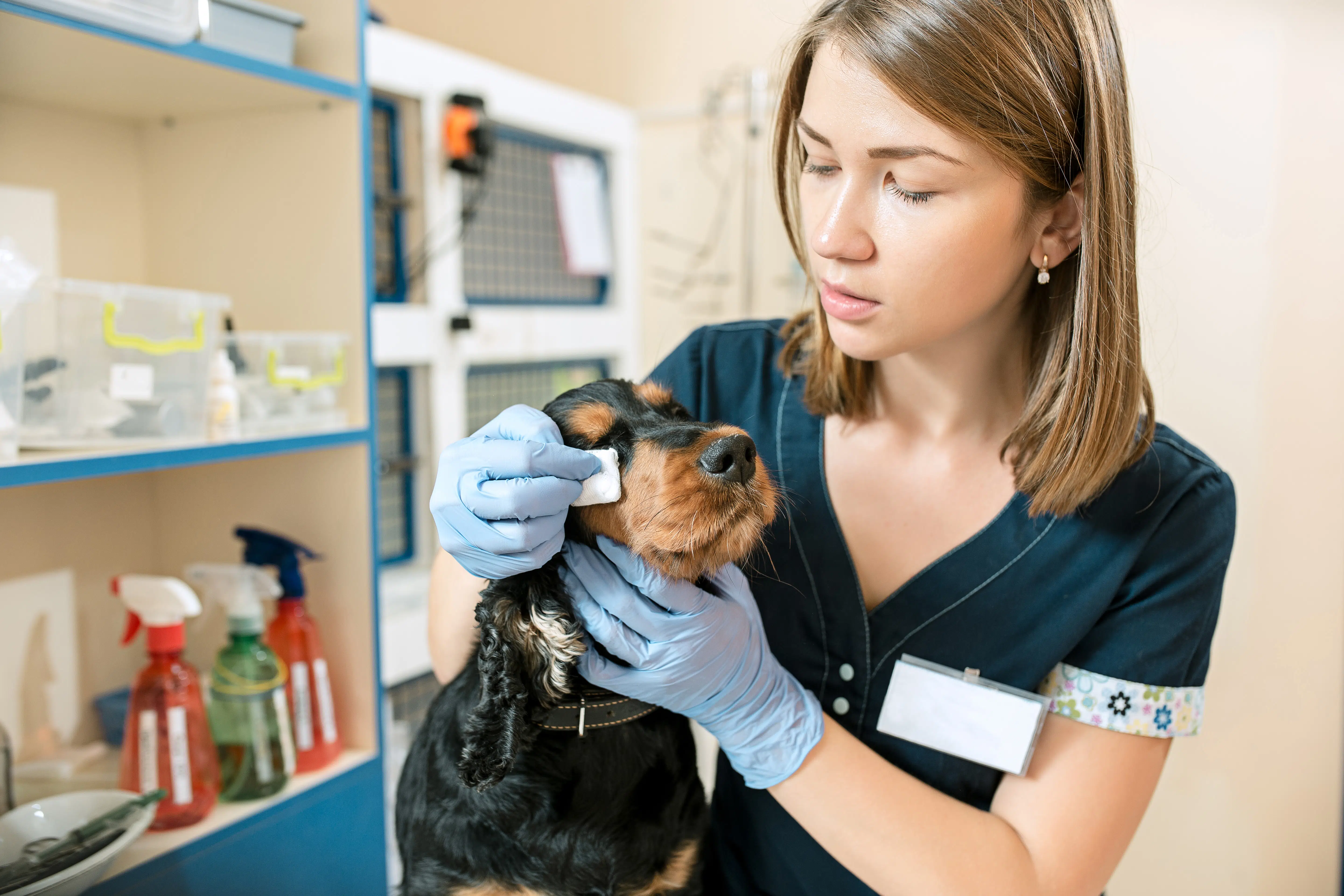Home » Blog » Pet » Pet Health & Safety » Ehrlichiosis In Dogs: What You Need To Know
Categories
Tags
animal welfare
breed profile
buying a car
buying a pet
Car
car accessories
car care
car features
car insurance
Car safety
car sales
car service
cat
cat behaviour
cat body language
Cat Breeds
cat food
cat insurance
comprehensive car insurance
Dog
Dog Behaviour
dog body language
Dog Breeds
dog food
Dog Insurance
dog training
eco friendly cars
Kitten
New Car
pet accessories
pet activities
Pet Adoption
pet breeders
pet days of the year
pet fun stuff
Pet Health
pet insurance
pet parenting
Pet Safety
pet services
Puppy
rescue pets
road safety
road trip
safe driving
Recent Blog:
Facebook Posts
1 day ago
Growing old sometimes means we can’t take care of pets anymore. Find out some advice on what to do when this happens:![]()
![]() Senior Pet Parents – Contingency Plans for Your Pet – bit.ly/44bzwkS
... See MoreSee Less
Senior Pet Parents – Contingency Plans for Your Pet – bit.ly/44bzwkS
... See MoreSee Less
Senior Pet Parents' Contingency Plans for Pets
www.pd.com.au
Sometimes senior pet parents need more downtime. For older pet owners, this can be tricky to navigate if their dog or cat is full of beans and wants to3 days ago
Before you rev up the engine, let’s run through a checklist of things to do before starting your car. Not only do these steps ensure your safety (and that of others around you), but they also help in maintaining your vehicle's longevity.![]()
![]() Driving Tips: Your Checklist Before Starting Your Car -
... See MoreSee Less
Driving Tips: Your Checklist Before Starting Your Car -
... See MoreSee Less
Driving Tips: Your Checklist Before Starting Your Car
www.pd.com.au
Heading out for a drive? Hold up a second! Whether you're dashing off to work, running errands, or embarking on a road trip adventure, there are a few1 week ago
Are intestinal worms setting up camp in your dog’s gut without paying rent? Here’s how to spot the main culprits and get rid of them too:![]()
![]() Preventing, Identifying and Treating Intestinal Worms in Dogs - bit.ly/43YjCKu
... See MoreSee Less
Preventing, Identifying and Treating Intestinal Worms in Dogs - bit.ly/43YjCKu
... See MoreSee Less
Preventing, Identifying and Treating Intestinal Worms in Dogs
www.pd.com.au
Intestinal worms, such as roundworms in dogs are one of the least glamorous topics on the planet. These intestinal parasites that basically use our dogsYou may have seen from recent news stories and government reports that cases of canine ehrlichiosis are exploding in some parts of Australia. This deadly tick-borne disease can be fatal to dogs, and can be transmitted in as little as three hours by a feeding tick.
Australian dog owners should be very aware of canine ehrlichiosis as we move into spring and keep an eye out for any possible symptoms. So too should they be aware of ehrlichiosis and tick paralysis affecting other pets like cats, and even humans.
Here’s a guide to what it is, what the symptoms are, and how you can prevent and treat it.
What is canine ehrlichiosis?
Ehrlichiosis is a tick-borne disease which can infect dogs. It’s a bacterial infection which attacks the immune system and in Australia the main carrier is the brown dog tick.
Dogs can’t transmit the disease directly to one another, so it’s not considered a contagious disease but an infectious one. The only way for a dog to contract ehrlichiosis is for them to be bitten by a tick carrying the disease.
Ehrlichiosis can be divided into three stages: acute, sub-clinical, and chronic.
The first stage is the acute stage. This usually happens a couple of weeks after the dog is infected, and lasts for up to a month. Symptoms are often noted at this stage (more on this in the next section). Most dogs recover within a couple of weeks, but remain infected.
The sub-clinical stage comes next. Dogs with sub-clinical ehrlichiosis fall into one of three categories. They either:
- remain infected but asymptomatic
- manage to recover from and clear the infection completely, or
- eventually progress to the third stage of infection – the chronic stage.
The third stage, chronic infection, doesn’t occur in all infected dogs. When it does, however, it is the most serious stage. This stage of the disease can be fatal.

What are the symptoms of ehrlichiosis?
The symptoms of ehrlichiosis during the acute stage are typically non-specific. That is, it can be hard to link them to a particular disease or illness. Symptoms include:
- fever
- lethargy or listlessness
- swelling or oedema of the legs
- enlarged nymph nodes
- lack of appetite and/or weight loss
- discharge from the nose and eyes
- nosebleeds or bleeding under the skin
If blood tests are done, your dog might show signs of mild anaemia or low platelet levels.
If the dog progresses to the chronic stage, symptoms will worsen. They can include symptoms listed during the acute stage, in addition to:
- breathing problems
- excessive urination and thirst
- pale gums (due to anaemia)
- eye abnormalities such as cloudy eyes
- neurological abnormalities
If left untreated, this stage can be fatal.
It’s worth remembering that as with most diseases, the severity of symptoms can vary from dog to dog. There is some evidence that the German Shepherd and Doberman Pinscher are more prone to severe infection than other breeds.
As mentioned above, the sub-clinical stage has no symptoms.
Prevention and treatment options
Having read the above, you’ll no doubt be wondering: What are the best ways to avoid my dog contracting ehrlichiosis?
And if he or she does end up infected despite my best efforts, what are the treatment options available?
Prevention
Because there is no vaccine for ehrlichiosis, prevention revolves around good tick management. While you can’t prevent it entirely, doubling down on tick prevention will limit your dog’s risk.
There are lots of tick prevention options available, but if you live in a high risk area (the Northern Territory, for instance) or regularly take your dog walking through areas where ticks are present, it’s wise to use more than one method.
You could try a tick collar and a regular preventative treatment such as Bravecto. Flea and tick treatment should be a major part of routine pet care anyway, and you should always try to limit your dog’s exposure to ticks as much as possible.
Remember to check your dog for ticks regularly regardless, especially during bath and brushing time. If you do notice any ticks, remove them immediately (see how to remove a tick properly) and keep a close eye on your dog.
Treatment for ehrlichiosis
Treatment for ehrlichiosis in dogs usually involves a fairly long course of antibiotics, as well as symptomatic treatment if necessary. Depending on the severity of the infection, your dog may also need to be hospitalised or given a blood transfusion.
The earlier ehrlichiosis is detected and treated, the better the chances of a full recovery.
Pet insurance can help you foot the bill
If your dog does contract ehrlichiosis, early treatment is your best bet for a full recovery. Don’t wait until it’s too late and other health damage has been done.
Pet insurance can reduce the worry associated with one or more vet trips for a whole range of illnesses and injuries, plus the testing and medication involved, by alleviating some of the financial pressure. Plus, having pet insurance can help improve your vet’s mental health.
Check out our dog insurance plans here.
Share On:




